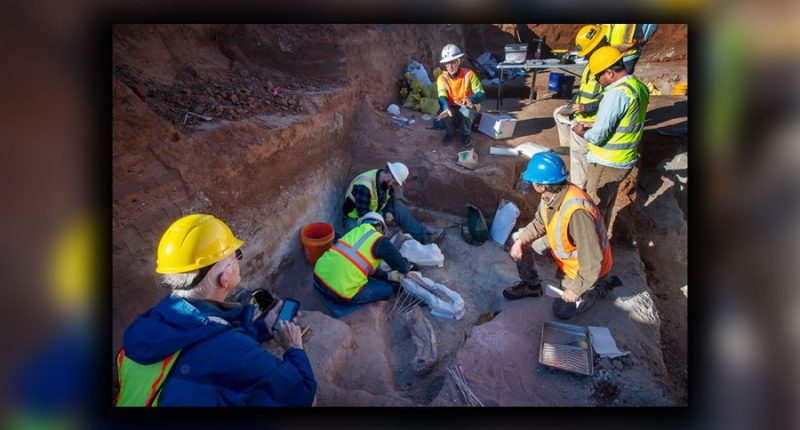Share this @internewscast.com
LUBBOCK, Texas — While conducting an environmental review for Loop 88 in Lubbock, Texas, TxDOT found what experts believe to be the tooth of a giant ground sloth.
The Panhandle is home to several playas, or lakes that are remnants of water left over from the Ice Age, where both humans and megafauna, large creatures that used to roam the earth, would use as a water source.
This is why TxDOT wanted to search for any remnants of human activity in the area, but instead found something much bigger.
“We know we’ve found giant ground sloth by its distinctive tooth,” said TxDOT’s environmental affairs division’s project planner Chris Ringstaff, “Whether all the bones are giant ground sloth or there are different animals such as mammoth or mastodon, we’re not sure. Paleontologists will give us positive identification.”

According to the National Park Service, there are two giant ground sloths, but due to the location of the bones, it’s likely these are remnants of the Shasta Ground sloth or Nothrotheriops shastensis. These 9-foot-tall and 550-pound creatures only moved to North America from South America around 2.6 million years ago along with the ancestors of what we now know as cats, llamas and foxes.
While mummified versions of the ground sloths have been found in New Mexican desert caves, the Shasta Ground Sloth mostly inhabited “dry, open juniper woodlands, seasonal wetlands, and open woodlands” which is a far cry from the current environment of West Texas but fits right in with research done by the Lubbock Lake Landmark’s research into the Ice Age on the South Plains.
Those paleontologists are working with the Museum of Texas Tech University to prepare, identify and house all the bones that were found as well as continue searching the area for any evidence of human activity, which would be a first for a TxDOT project.
“We’re here to get the road built,” Ringstaff said. “But who doesn’t love digging up big ol’ animals?”













